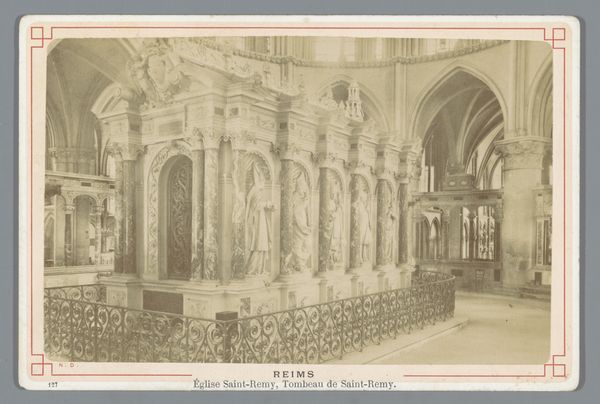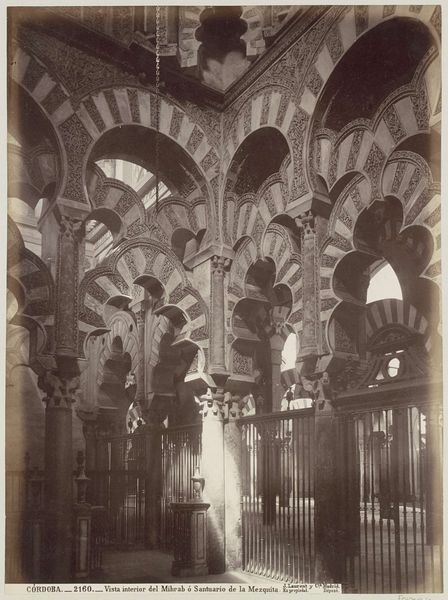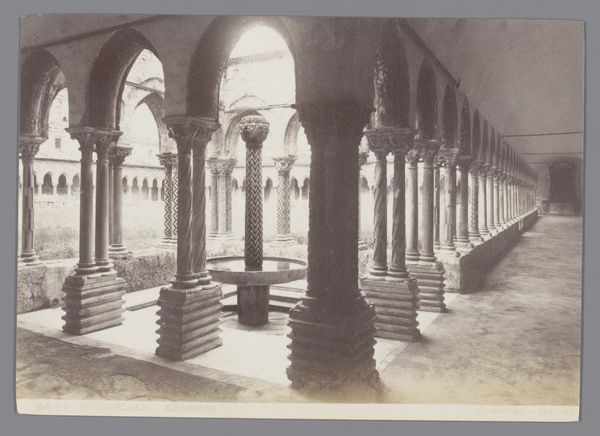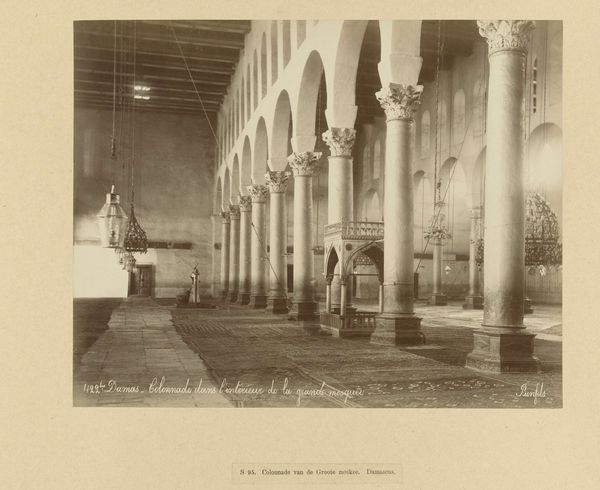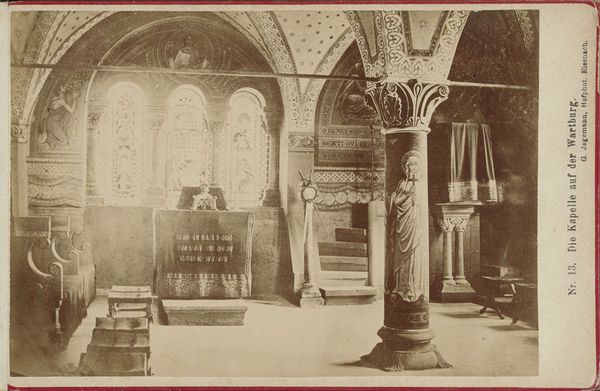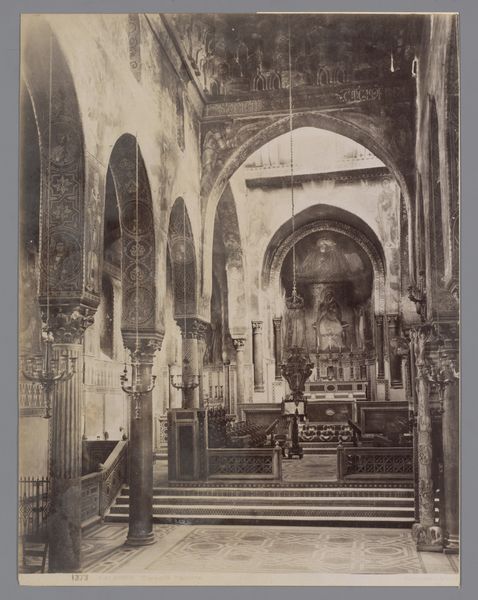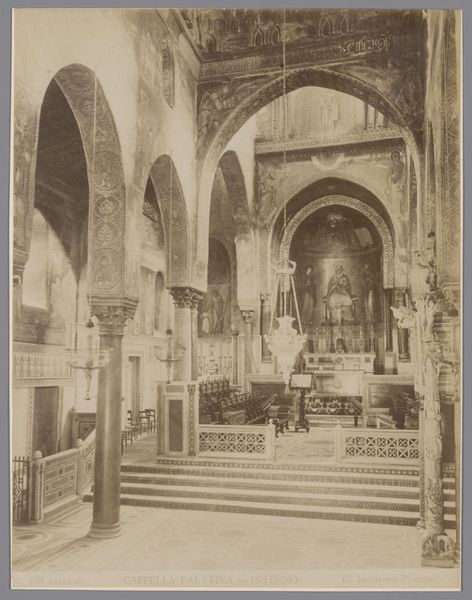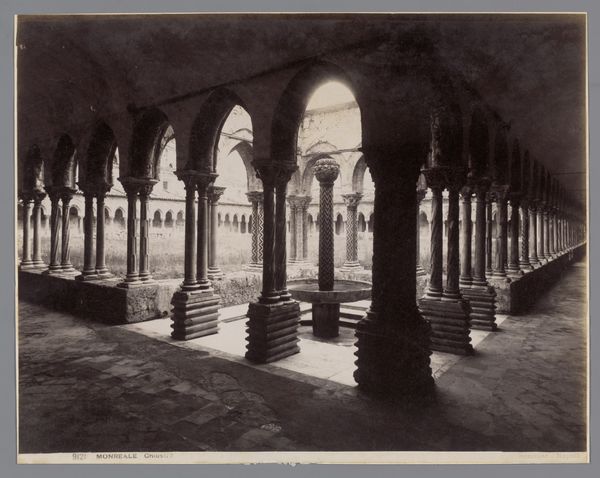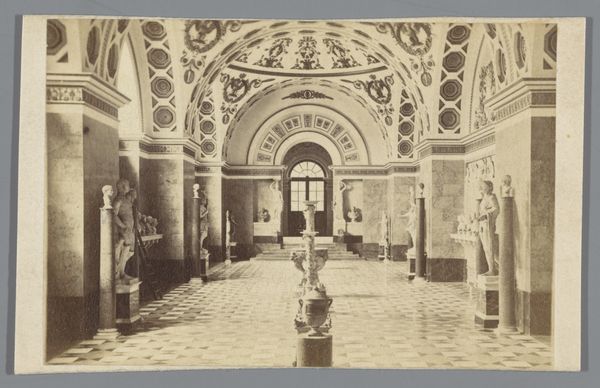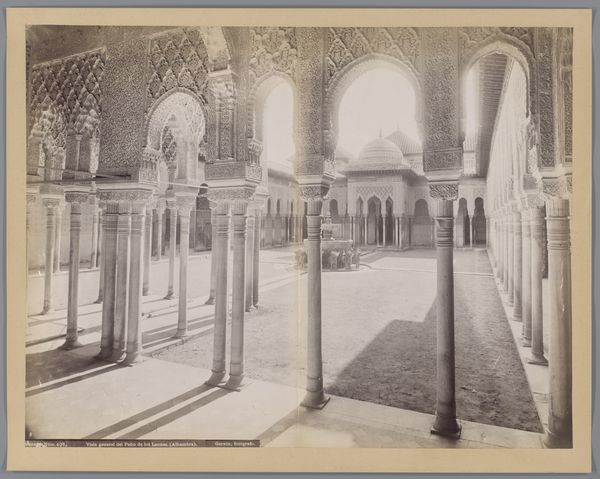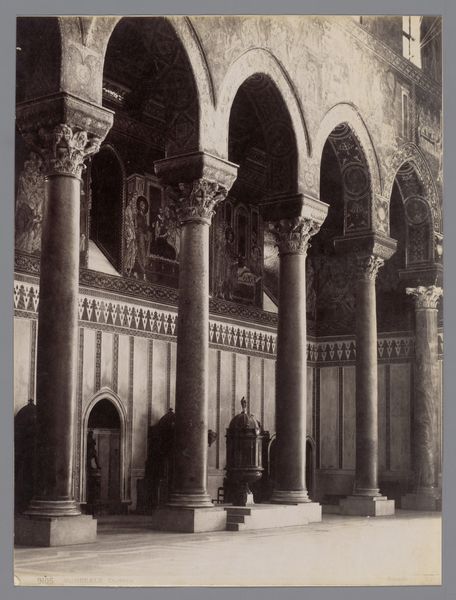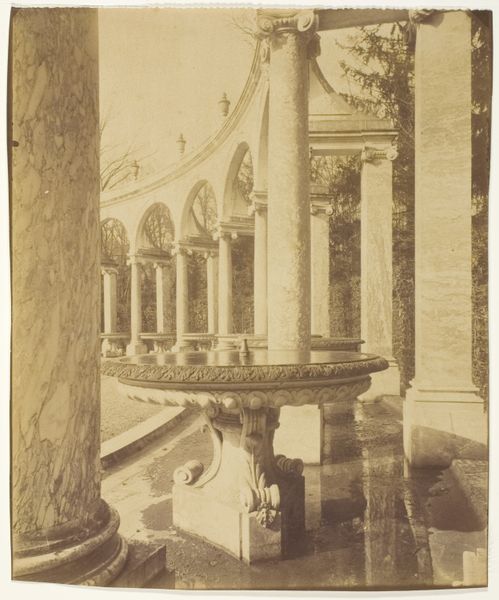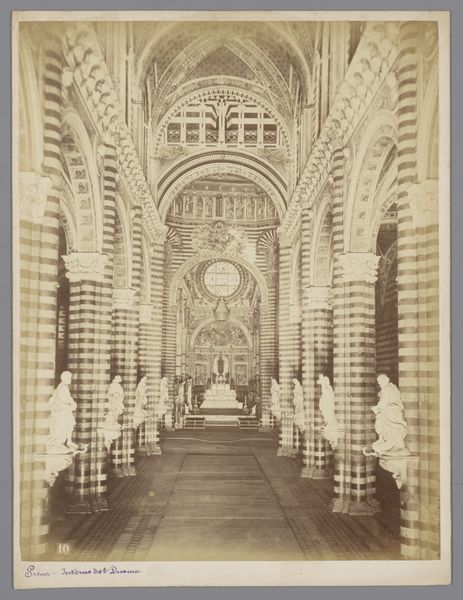
print, photography, gelatin-silver-print, architecture
# print
#
sculpture
#
historic architecture
#
traditional architecture
#
photography
#
gelatin-silver-print
#
19th century
#
islamic-art
#
architecture
Dimensions: height 245 mm, width 340 mm
Copyright: Rijks Museum: Open Domain
Editor: This is "Interior of the Santa María la Blanca in Toledo," a gelatin-silver print by Juan Laurent, dating from between 1857 and 1880. I'm really struck by the way the light plays on those arches. What stands out to you most when you look at this piece? Curator: The photograph captures more than just an architectural space; it’s a testament to cultural confluence and religious transformation. Originally a synagogue, later converted into a church, Santa María la Blanca embodies the complex layers of Spanish history, especially concerning identity and religious tolerance. Editor: Transformation is a great way to put it. Curator: Exactly! Laurent's photograph invites us to consider how power structures and shifting social dynamics reshape not only buildings, but collective identities. Those Moorish arches are not just aesthetic; they’re signifiers of Islamic influence, repurposed and recontextualized within a Christian framework. Don't you think the image serves as a subtle commentary on cultural appropriation? Editor: It's hard to ignore that reading, the history baked into the building. Considering the period when Laurent took this, was he conscious of highlighting those tensions, or was he simply documenting the architecture? Curator: That's a crucial question! Whether intentionally or not, by capturing this space, Laurent provides a visual document that allows us, generations later, to critically examine Spain’s multi-layered past and consider how dominant narratives often obscure the contributions and experiences of marginalized communities. Editor: So the photograph functions as a historical record but also as an ongoing conversation about power and identity? Curator: Precisely. It's a mirror reflecting both history and our present-day concerns with cultural heritage and representation. Editor: I never thought of a photograph as an invitation for social discourse before. Thank you!
Comments
No comments
Be the first to comment and join the conversation on the ultimate creative platform.
